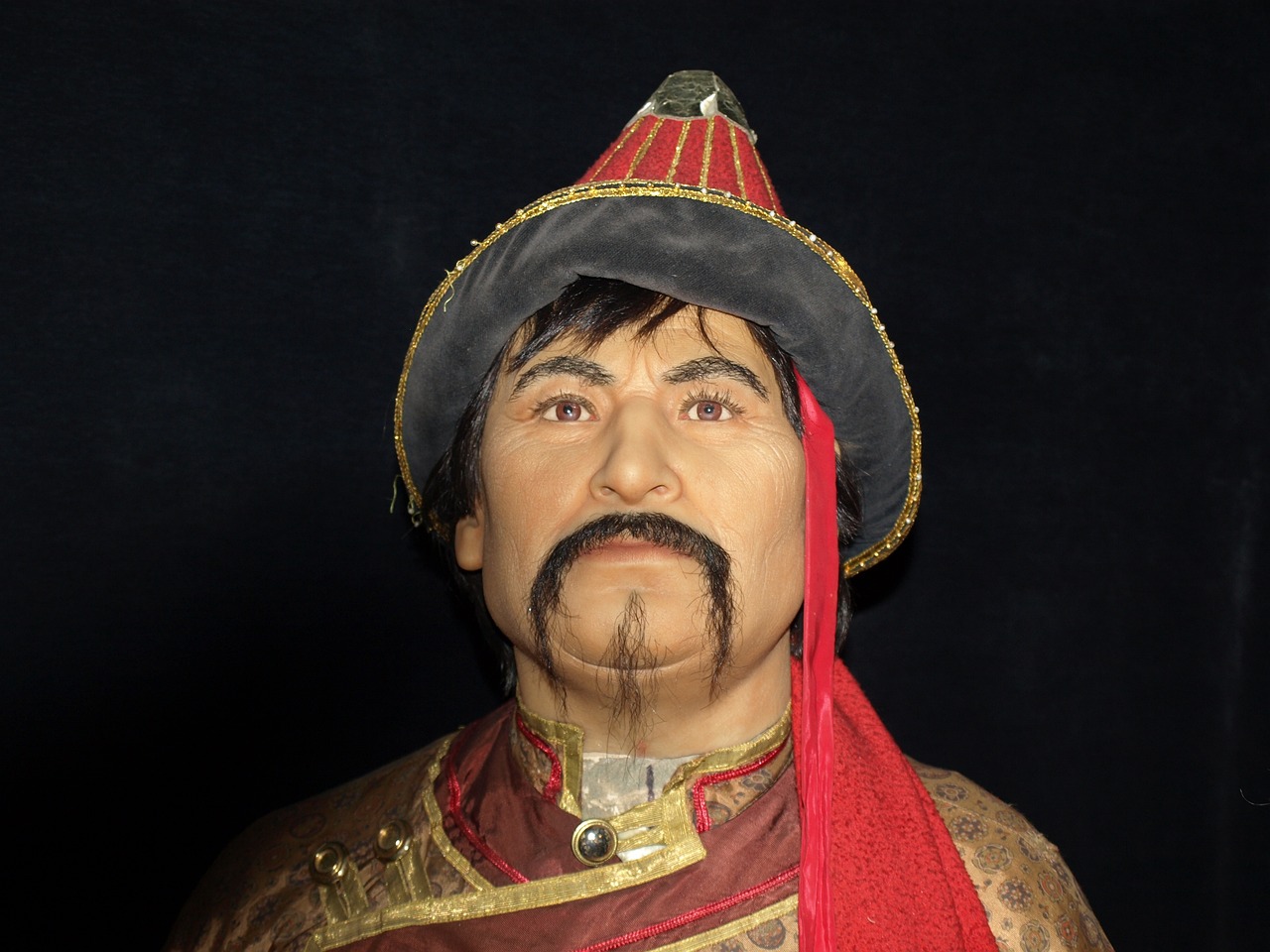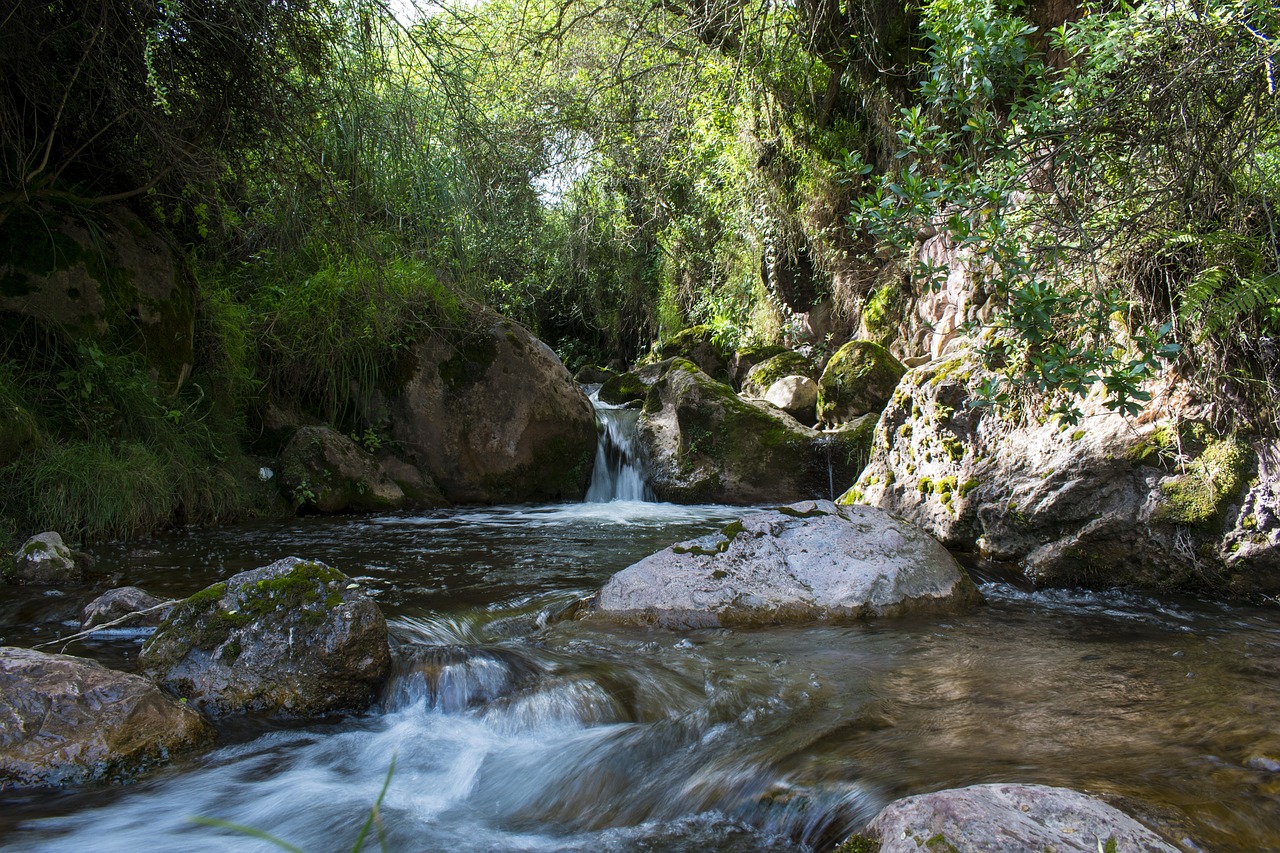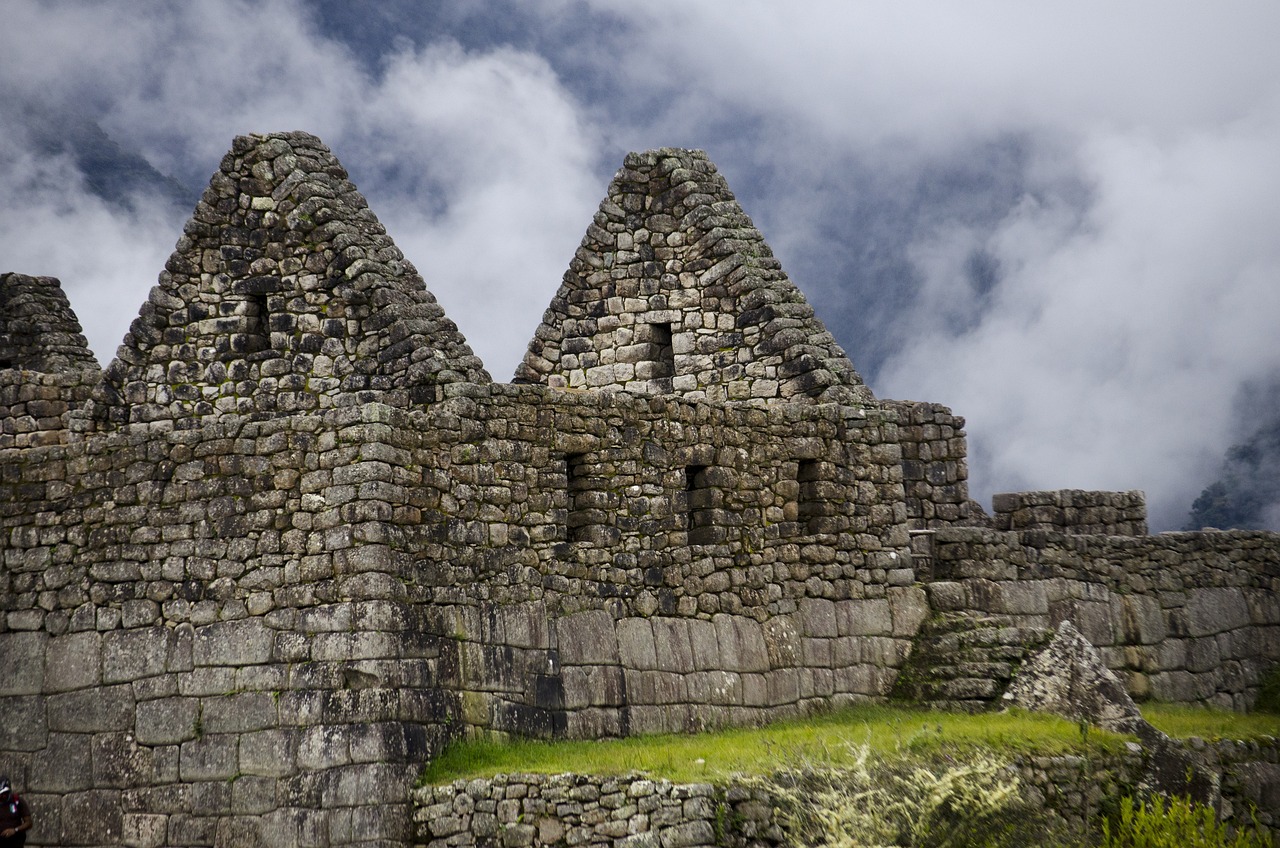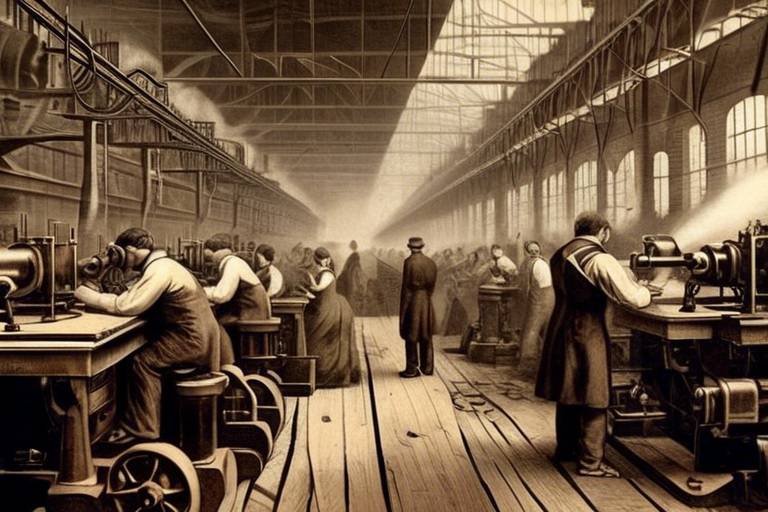The Rise of the Inca Empire - Achievements and Innovations
The rise of the Inca Empire in ancient South America stands as a testament to human ingenuity and resilience. This powerful civilization, nestled in the Andes mountains, achieved remarkable feats that continue to awe and inspire us today. From their strategic expansion to their sophisticated engineering marvels, the Incas left an indelible mark on history with their innovative achievements.
As the Inca Empire expanded its territory through a combination of military prowess and diplomatic alliances, it grew to become the largest empire in pre-Columbian America. The Incas strategically navigated the diverse landscapes of South America, forging connections with neighboring tribes and integrating them into their vast domain.
One of the most striking aspects of Inca civilization was their engineering prowess. The Incas built an extensive network of roads that spanned thousands of miles, connecting their empire with precision and efficiency. Their agricultural terraces and intricate irrigation systems showcased their advanced knowledge of land management and sustainable farming practices.
Delving into the cultural advancements of the Incas reveals a rich tapestry of traditions and beliefs that shaped their society. From their unique language, Quechua, to their elaborate religious ceremonies and artistic expressions, the Incas celebrated their heritage with pride and reverence.
The administrative innovations of the Inca Empire were equally impressive, characterized by a centralized governance system that maintained order and stability throughout their vast territories. Meticulous record-keeping and innovative agricultural policies sustained the empire's growth and prosperity, ensuring the well-being of its inhabitants.
Technologically, the Incas were ahead of their time, with advanced metalworking techniques, intricate textile production, and architectural achievements that continue to astound archaeologists and historians. Their contributions to science and craftsmanship influenced later civilizations in the region and beyond.
However, the social structure of the Inca society was marked by hierarchical divisions and inequalities. The emperor held supreme power, and class distinctions were evident, leading to disparities in wealth and opportunities among the population. Despite their advancements, the Incas grappled with social challenges that shaped their civilization.
Religious practices played a central role in Inca society, with complex rituals and ceremonies honoring nature deities like Inti, the sun god. Sacred sites such as Machu Picchu held profound spiritual significance, serving as centers of worship and pilgrimage for the Inca people.
Reflecting on the legacy of the Inca Empire, we are reminded of its enduring impact on the history of South America. The empire's eventual decline at the hands of Spanish conquistadors marked the end of an era, but efforts to preserve and celebrate its cultural heritage continue to this day, allowing us to glimpse into the achievements and innovations of this remarkable civilization.

Geographical Expansion
Exploring the historical background, remarkable achievements, and innovative aspects that characterized the rise of the powerful Inca Empire in ancient South America.
During its peak, the Inca Empire expanded its territorial reach through a combination of strategic military campaigns and diplomatic alliances. This expansion was not merely about conquering lands but also about integrating diverse cultures into a unified empire. The Incas managed to establish the largest empire in pre-Columbian America by skillfully navigating the rugged terrain of the Andes Mountains and the lush valleys below.
One of the key strategies employed by the Incas was the construction of an extensive network of roads that connected distant regions within their empire. These roads facilitated communication, trade, and the swift movement of troops, enabling the empire to maintain control over its vast territories. Moreover, the Incas utilized their knowledge of the land to forge alliances with neighboring tribes and societies, expanding their influence through both conquest and diplomacy.
Through their geographical expansion, the Inca Empire not only asserted its military dominance but also established a cultural and economic hegemony that shaped the entire region. The ability to govern such a vast and diverse territory was a testament to the organizational skills and strategic vision of the Inca rulers.

Engineering Marvels
The Inca Empire was renowned for its remarkable engineering marvels that showcased the advanced knowledge and ingenuity of this ancient civilization. One of the most impressive feats of the Incas was their extensive road networks, which spanned thousands of miles across rugged terrain, connecting distant regions of the empire. These roads, built with precision and skill, facilitated communication, trade, and the movement of troops, contributing to the empire's unity and efficiency.
In addition to their road systems, the Incas also excelled in the construction of agricultural terraces. These terraces, known as "andenes," were built on steep mountainsides and served multiple purposes. They not only prevented soil erosion and landslides but also created flat surfaces for farming, allowing the Incas to cultivate crops at high altitudes where traditional agriculture would have been challenging.
Furthermore, the Incas developed intricate irrigation systems that efficiently distributed water to their agricultural terraces, ensuring consistent crop yields even in arid regions. These engineering achievements were vital for sustaining the empire's population and supporting its expansion into diverse ecological zones.
Moreover, the Inca Empire is renowned for its architectural marvels, with iconic structures like Machu Picchu standing as testaments to their architectural prowess. The precision of their stone masonry, without the use of mortar, and the harmonious integration of buildings with the natural landscape demonstrate the Incas' deep understanding of engineering principles and aesthetics.
Overall, the engineering marvels of the Inca Empire not only reflected their practical skills but also symbolized their harmonious relationship with the environment and their ability to adapt to diverse geographical challenges with innovative solutions.

Cultural Advancements
The Inca civilization was not only renowned for its military prowess and expansive empire but also for its remarkable cultural advancements that left a lasting impact on ancient South America. One of the key cultural achievements of the Incas was the development of a unique language known as Quechua, which served as a unifying force among the diverse ethnic groups within the empire. This linguistic innovation allowed for effective communication and cultural exchange, fostering a sense of unity and identity among the Inca people.
In addition to their linguistic contributions, the Incas were also known for their elaborate religious beliefs and practices that permeated every aspect of their society. Central to Inca religion was the worship of nature deities, with Inti, the sun god, holding a particularly prominent position. The Incas believed that by honoring and appeasing these deities through rituals and offerings, they could ensure the prosperity and well-being of their empire.
The artistic and architectural achievements of the Incas further exemplified their cultural sophistication. Their intricate stonework, exemplified by structures like Machu Picchu, showcased their mastery of construction techniques and their ability to harmonize with the natural landscape. Inca art, characterized by intricate textiles and pottery adorned with symbolic motifs, reflected their reverence for nature and spiritual beliefs.
Moreover, the Inca civilization was distinguished by its complex social hierarchy, where individuals' roles and status were clearly defined based on factors such as lineage and occupation. This hierarchical structure, overseen by the emperor and the nobility, reinforced societal order and stability but also perpetuated inequalities in wealth and opportunities among the population.
Overall, the cultural advancements of the Inca Empire not only enriched their society but also contributed to their enduring legacy in the annals of history. Through their language, religion, art, and social structure, the Incas demonstrated a sophisticated understanding of the world around them and a profound connection to their beliefs and traditions.

Administrative Innovations
The Inca Empire was renowned for its innovative administrative system, which played a crucial role in the empire's governance and sustainability. At the heart of this system was the Sapa Inca, the emperor, who held supreme power and was considered a divine ruler. Beneath the emperor, a complex hierarchy of officials managed various aspects of the empire's administration, ensuring efficient governance and organization.
One of the key administrative innovations of the Incas was their meticulous record-keeping system, known as quipu. The quipu consisted of a series of knotted strings of different colors and lengths, used to record numerical data, historical events, and even administrative details. This unique method of information storage and communication helped in the management of resources, tribute collection, and tracking of population statistics.
In addition to the quipu, the Incas implemented a centralized governance system that allowed for effective communication and decision-making across the vast empire. Provincial governors, known as tucuyricuy, served as representatives of the emperor in different regions, ensuring compliance with imperial policies and laws. This hierarchical structure facilitated the collection of taxes, distribution of resources, and maintenance of order throughout the empire.
Moreover, the Incas introduced innovative agricultural policies that promoted sustainability and productivity. The mit'a system, a form of mandatory labor tax, required citizens to contribute labor for public works projects, agricultural activities, and military service. This system not only ensured the maintenance of essential infrastructure but also fostered a sense of communal responsibility and solidarity among the population.
Furthermore, the Incas developed an extensive network of royal estates called usnu, strategically located throughout the empire to oversee agricultural production, storage of goods, and administrative functions. These estates played a vital role in supporting the empire's economy, providing food supplies, and serving as centers of political and religious activities.
In conclusion, the administrative innovations of the Inca Empire were instrumental in maintaining the cohesion and prosperity of one of the most powerful civilizations in ancient South America. Their centralized governance, record-keeping techniques, agricultural policies, and hierarchical structure laid the foundation for effective administration and sustainable growth, leaving a lasting legacy that continues to fascinate historians and archaeologists to this day.

Technological Contributions
When it comes to the technological prowess of the Inca Empire, one cannot overlook their remarkable advancements in various fields. The Incas were known for their exceptional skills in metalworking, particularly in the crafting of intricate gold and silver artifacts. Their mastery of metallurgy allowed them to create exquisite jewelry, ceremonial objects, and tools that showcased their artistic finesse and technical expertise.
Moreover, the Incas excelled in textile production, utilizing intricate weaving techniques to create colorful and finely detailed textiles. These textiles were not only used for clothing but also served as valuable trade commodities within the empire. The quality and complexity of Inca textiles were unparalleled in the region, demonstrating their advanced knowledge of materials and design.
Architecturally, the Inca Empire left a lasting impact with their impressive construction projects, most notably the renowned stone structures such as Machu Picchu. The precision and ingenuity displayed in the Inca architecture, characterized by massive stone blocks fitted together without mortar, continue to astound modern engineers and architects. The sophisticated engineering techniques employed by the Incas in creating structures that have withstood the test of time are a testament to their technological acumen.
Furthermore, the Incas developed innovative agricultural methods to overcome the challenges of cultivating crops in the rugged terrain of the Andes. They constructed extensive terraced fields and irrigation systems that allowed them to grow a variety of crops at different altitudes. The agricultural innovations of the Incas not only sustained their population but also contributed to the overall prosperity of the empire.
In conclusion, the technological contributions of the Inca Empire were truly groundbreaking, encompassing advancements in metallurgy, textile production, architecture, and agriculture. Their expertise in these areas not only facilitated the empire's growth and development but also left a lasting legacy that continues to inspire admiration and awe to this day.

Social Structure and Inequality
The social structure of the Inca society was intricately organized, reflecting a hierarchical system where individuals were placed in distinct classes based on their roles and responsibilities. At the pinnacle of this structure stood the emperor, considered divine and holding supreme power over all aspects of the empire. Below the emperor were the nobles, comprising aristocrats, military leaders, and high-ranking officials who enjoyed privileges and luxury. These elites played a crucial role in governing the empire and maintaining social order.
Further down the social hierarchy were the common people, including farmers, artisans, and laborers who formed the backbone of the economy through their agricultural and craftwork contributions. Despite their essential roles, these individuals had limited social mobility and faced economic challenges, often struggling to improve their social status or accumulate wealth. The rigid class distinctions in Inca society reinforced inequalities in access to resources, opportunities, and power.
One notable aspect of the Inca social structure was the concept of ayllus, which were kinship-based communities responsible for collective labor, resource sharing, and social support. Within these ayllus, families worked together to fulfill their obligations to the state, contributing to the overall well-being of the community. However, this communal system also perpetuated social inequalities, as individuals born into lower-status ayllus faced barriers to advancement and faced discrimination based on their lineage.
The issue of inequality in Inca society extended beyond economic disparities to include gender distinctions as well. Women in the Inca Empire held specific roles primarily related to domestic duties, child-rearing, and textile production, while men dominated political and military spheres. Although women played essential roles in sustaining the household and transmitting cultural knowledge, they were often marginalized in decision-making processes and lacked formal political authority.
Despite the presence of social inequalities, the Inca society emphasized the importance of reciprocity, mutual aid, and collective welfare as core values that guided interpersonal relationships and community interactions. The intricate social structure of the Incas reflected a complex web of obligations, duties, and privileges that shaped individuals' identities and opportunities within the empire.

Religious Practices and Beliefs
Religious practices and beliefs were integral to the spiritual world of the Incas, shaping their cultural identity and societal norms. At the heart of Inca religion was the worship of nature deities, with Inti, the sun god, holding a central role as the supreme deity. The Incas believed that Inti provided light, warmth, and sustenance, making offerings and sacrifices to honor and appease this powerful entity.
In addition to Inti, the Incas revered other nature spirits, such as Pachamama, the earth goddess, and Illapa, the god of thunder and rain. These deities were believed to control natural phenomena and were essential for agricultural fertility and prosperity. The Incas conducted elaborate rituals and ceremonies to honor these deities, seeking their blessings for bountiful harvests and protection from natural disasters.
Sacred sites played a crucial role in Inca religious practices, with locations like Machu Picchu serving as centers of spiritual significance and pilgrimage. These sites were believed to be portals to the spiritual realm, where the divine could communicate with the mortal world. The Incas constructed elaborate temples and shrines at these sacred sites, adorned with intricate carvings and offerings to honor the gods.
The religious beliefs of the Incas were deeply intertwined with their daily lives, influencing everything from agricultural practices to social customs. Priests, known as amautas, held significant influence in Inca society, interpreting omens, performing rituals, and guiding spiritual practices. The Inca emperor, as the descendant of the sun god Inti, was also a central figure in religious ceremonies, embodying the divine connection between the earthly realm and the spiritual world.

Legacy and Decline
The legacy of the Inca Empire continues to captivate the world with its remarkable achievements and cultural richness. Despite its eventual decline due to Spanish conquest, the influence of the Incas on modern-day South America remains profound.
One of the most enduring legacies of the Inca Empire is its architectural marvels, such as the iconic Machu Picchu. This ancient citadel nestled in the Andes mountains stands as a testament to the Inca's engineering prowess and spiritual connection to the natural world.
Furthermore, the Inca's agricultural innovations, including the construction of vast terraces and irrigation systems, have left a lasting impact on farming practices in the region. Their advanced knowledge of cultivating crops at high altitudes continues to benefit local communities to this day.
Despite the decline of the empire, efforts to preserve and celebrate Inca culture persist. Museums, archaeological sites, and cultural festivals across South America pay homage to the rich heritage of the Incas, ensuring that their traditions and achievements are not forgotten.
However, the Spanish conquest in the 16th century marked the beginning of the end for the Inca Empire. The brutal colonization and exploitation of resources led to the downfall of the once-mighty civilization, causing irreparable damage to its societal structure and cultural identity.
Today, the descendants of the Inca people strive to reclaim and honor their heritage, seeking to revitalize their language, traditions, and customs. Through education and cultural initiatives, they aim to preserve the legacy of their ancestors and keep the spirit of the Inca Empire alive for future generations.
Frequently Asked Questions
- What were the key factors that contributed to the rise of the Inca Empire?
The rise of the Inca Empire was facilitated by a combination of strategic military campaigns, diplomatic alliances, and effective governance. The Incas expanded their territory through conquests and formed alliances with neighboring tribes, allowing them to establish a vast and powerful empire in ancient South America.
- What were some of the remarkable engineering marvels created by the Incas?
The Inca Empire was known for its impressive engineering feats, including the construction of a vast network of roads, agricultural terraces built on steep mountainsides, and intricate irrigation systems that enabled successful farming in challenging terrains. These engineering achievements demonstrated the advanced knowledge and ingenuity of the Inca civilization.
- How did the Inca Empire's administrative system contribute to its prosperity?
The efficient administrative system of the Incas, characterized by centralized governance, meticulous record-keeping, and innovative agricultural policies, played a crucial role in sustaining the empire's growth and prosperity. The Incas implemented sophisticated methods of resource management and organization, which allowed them to effectively govern their vast territories and ensure the well-being of their subjects.
- What role did religious beliefs and practices play in Inca society?
Religion held a significant place in Inca society, with the worship of nature deities like Inti, the sun god, and the performance of elaborate rituals playing a central role in their spiritual practices. Sacred sites such as Machu Picchu were revered as important religious centers, reflecting the deep connection between the Incas' religious beliefs and their cultural identity.
- What led to the eventual decline of the Inca Empire?
The decline of the Inca Empire was primarily attributed to the Spanish conquest led by Francisco Pizarro in the 16th century. The arrival of the Spanish conquistadors brought about devastating consequences for the Inca civilization, leading to the downfall of their empire and the loss of their cultural heritage. Despite its decline, the legacy of the Inca Empire continues to be celebrated and preserved in modern-day South America.



















